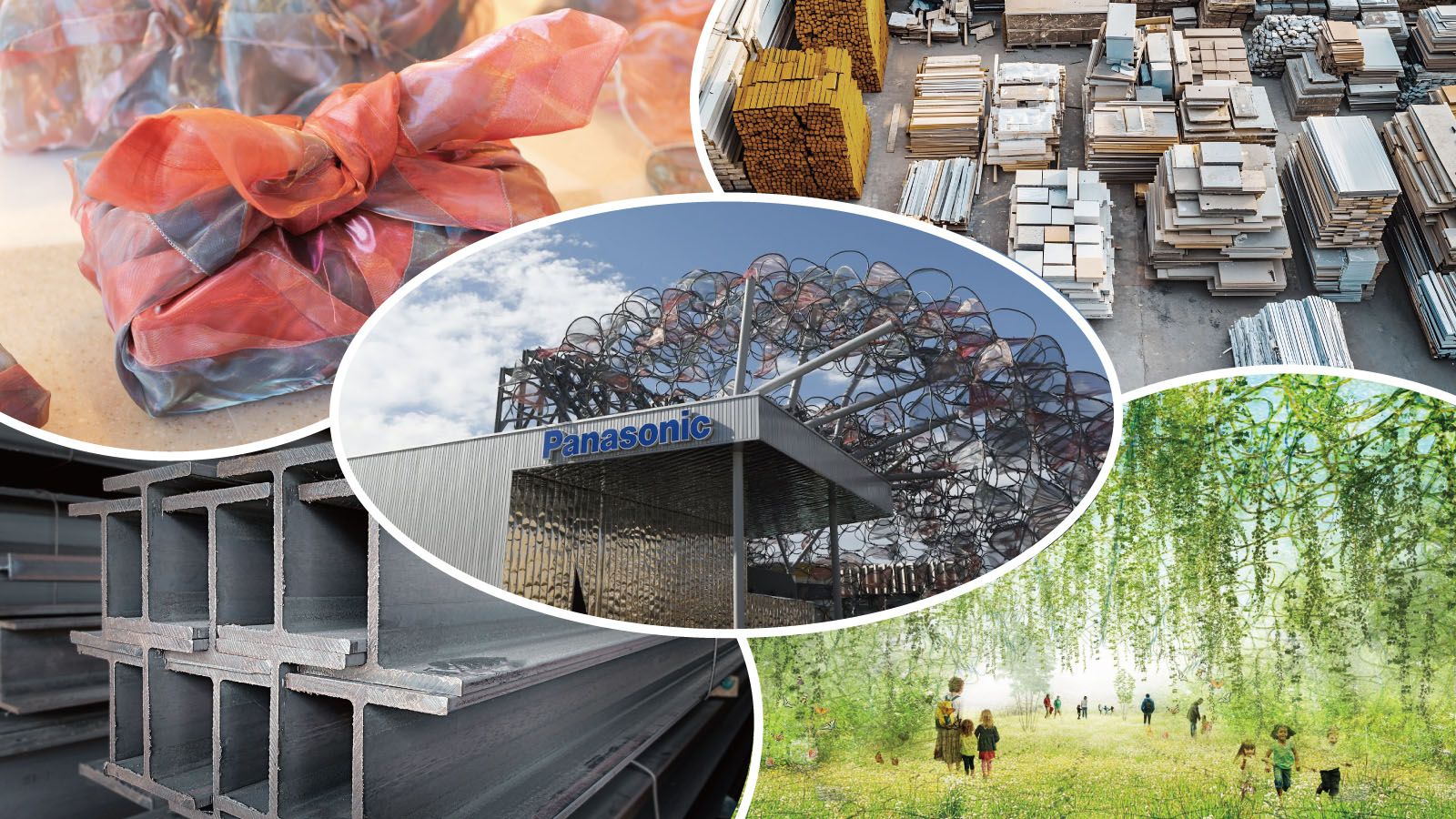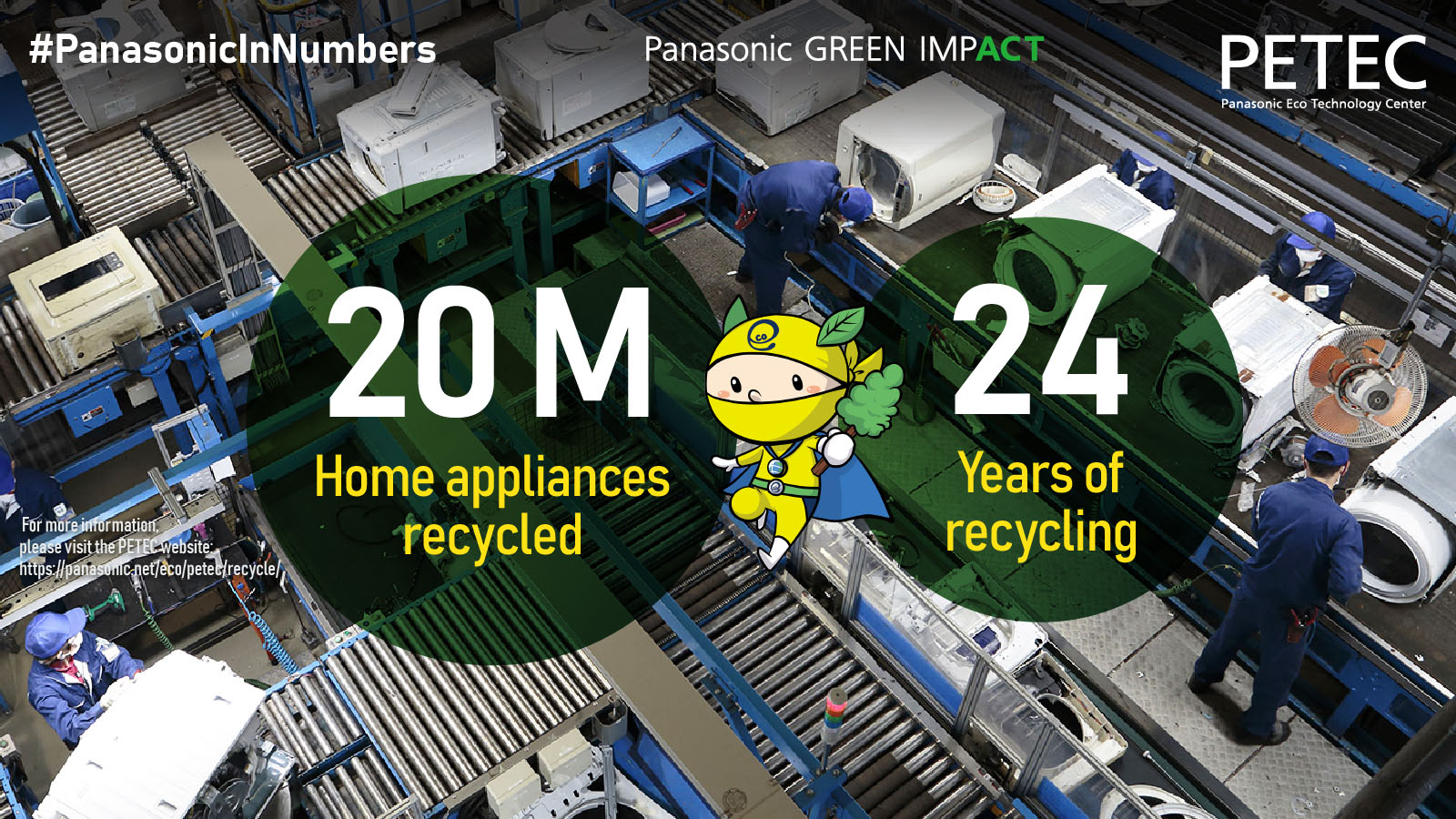The last two years have brought many challenges to our planet and its inhabitants. Some, like the growing evidence of the impact of climate change, were existing issues brought into sharper relief during this period. Others, like the COVID pandemic, were new challenges that have upended many people’s assumptions about what is important in life.
Reflecting these new realities and priorities, earlier this year Panasonic Group announced it would refocus its entire organization on protecting the global environment and on supporting people’s well-being. The company announced it will share and align technology across many of its product ranges by creating a single Technology Sector under the umbrella of a new Panasonic Holdings Corporation to develop and implement a common technology foundation.
To demonstrate that its focus on sustainability and people’s well-being will consist of more than just slogans, Panasonic Holdings announced it expects to spend more than four-fifths of its overall R&D budget in those two areas by FY2025. The new Technology Sector will implement cross-group initiatives and help create new businesses that will deliver relevant solutions.
Panasonic Holdings Group CTO Tatsuo Ogawa summed up the new organization’s bold goal. “Our aim,” he announced, “is to create a world you would never see without us.”
To help protect the global environment, at the beginning of this year the company announced its ambitious Panasonic GREEN IMPACT (PGI) initiative, which will be a major focus for the new Technology Sector. As well as targeting a reduction of Panasonic’s own CO2 emissions by more than 300 million tons by 2050, the PGI program aims to spur society-wide emission reductions by offering consumers energy-saving products and by supplying energy-saving solutions and renewable energy technologies to its business customers. In July this year, the company released its GREEN IMPACT PLAN 2024, detailing concrete actions it will take over the next two years in order to achieve its PGI targets.
The key technologies that will help achieve these environmental objectives include new-generation perovskite solar cells, the latest generation of lightweight solar cells. A wide variety of sizes means they can be installed almost anywhere; semi-transparent cells can even be installed on windows and glass doors. They are highly efficient; one of Panasonic’s prototype models currently boasts a conversion efficiency rate of 17.9%—the world’s highest. Compared to traditional silicon-based solar cells, which are produced using high temperatures and vapor deposition, they are also expected to consume less energy during manufacturing because the photovoltaic layer can be formed by printing.
A further relevant technology is the generation of hydrogen from water via a process known as water electrolysis. Hydrogen is a relatively clean source of energy since it does not emit carbon dioxide when burned. However, electrolysis is an expensive process which uses significant amounts of electricity; Panasonic has been developing a much cheaper solution which uses sunlight to trigger a photocatalytic reaction that generates the hydrogen. The company has also developed a water electrolysis device using the technology and expertise it cultivated in the development of fuel cells.
A third area of technology that will support Panasonic’s Green Impact initiatives is the balancing of electricity supply and demand by replacing large centralized, fossil fuel-based power plants with small local facilities generating electricity from renewable sources. Panasonic’s Distributed Energy Resource Management System (DERMS) will leverage the latest IT capabilities to manage the generation and provision of this locally sourced green energy to customers at their individual plants. It will also help counteract the inherent instability of renewable energy output by enhancing energy storage and delivery capabilities.
In the new Panasonic organization’s second area of focus—people’s well-being—the company intends to exploit its deep understanding of consumer behavior and preferences to help improve well-being in the home and in the workplace. Explains a company spokesman, “Over the years we became very good at using technology to produce consumer goods packed with more and more features, but in some ways we lost sight of what people really need to live comfortable and fulfilled daily lives. The most recent advances in technology now give us the opportunity to address this.”
As an example, individual Panasonic consumer products in the past were frequently built by independent units of the company using customized software with a “one-size-fits-all” approach to functionality. This meant that advances in software could not easily be leveraged across multiple products, and individual appliances could not easily be configured to match their owners’ preferences or usage patterns.
Panasonic’s new Common Software Infrastructure is addressing these challenges by gradually standardizing the software environments of the company’s consumer products and linking these to a cloud platform so that their functionality can be upgraded more easily and without the need to replace hardware. Panasonic calls this “user-first development,” and already 24 categories of product have been designed in accordance with the new platform—over 6 million connected devices. Some of these products will not only be operable but also customizable using users’ smartphones.
A related development that will benefit business customers is Panasonic’s Cyber-Physical System, or CPS, which, as its name suggests, links the physical world with the virtual world. Real-world data from customers’ manufacturing sites and other facilities, including video footage monitoring the movement of people and goods, and sensor data reflecting the physical environment, is collected and analyzed in cyberspace using AI.
The analysis might highlight production issues that are common across companies; it can also identify those which are unique to a particular company. Could the manufacture of a product be speeded up by changing production layout? Would a re-engineering of a particular process make the working environment less stressful for plant workers? What changes to an operational process might result in improved staff satisfaction and productivity?
The results of the analysis are fed back into the physical world in the form of suggestions for improving processes and/or environments. The aim, says a Panasonic spokesman, is to share this kind of data with internal and external, partners and create “an ecosystem for value creation.”
The vision of Panasonic’s legendary founder Konosuke Matsushita was that companies should do more than just create useful products—he believed they should embrace the loftier goal of helping to improve society by making people’s lives safer, more comfortable, and more convenient.
Almost a century later, as the world faces fresh challenges on multiple fronts, including sustaining our planet’s natural resources and learning to live with pandemics, Panasonic Holdings’ focus on the environment and people’s well-being remains true to its founder’s vision.
“Social problem-solving,” explains new CEO Yuki Kusumi, “is our core business.”







